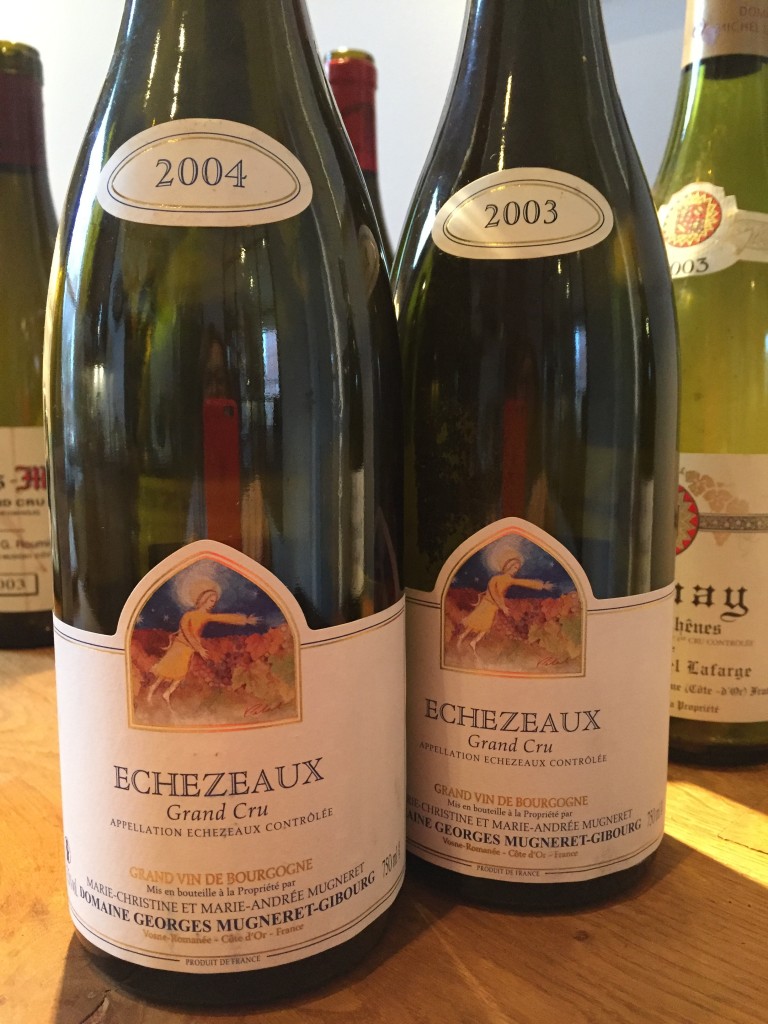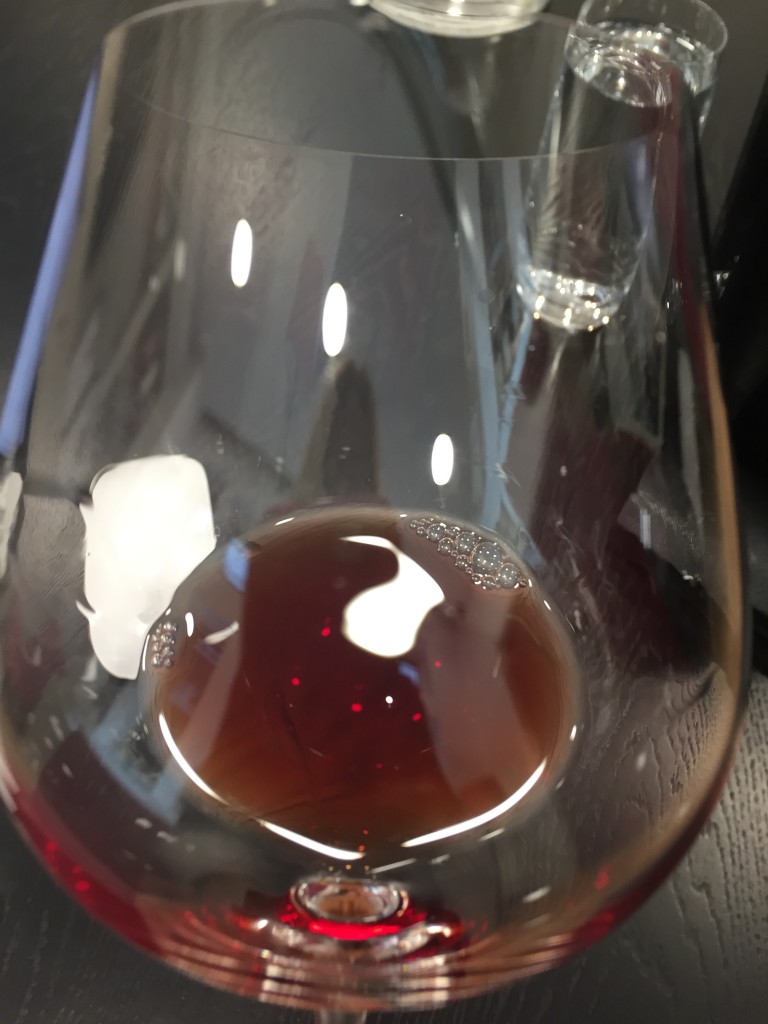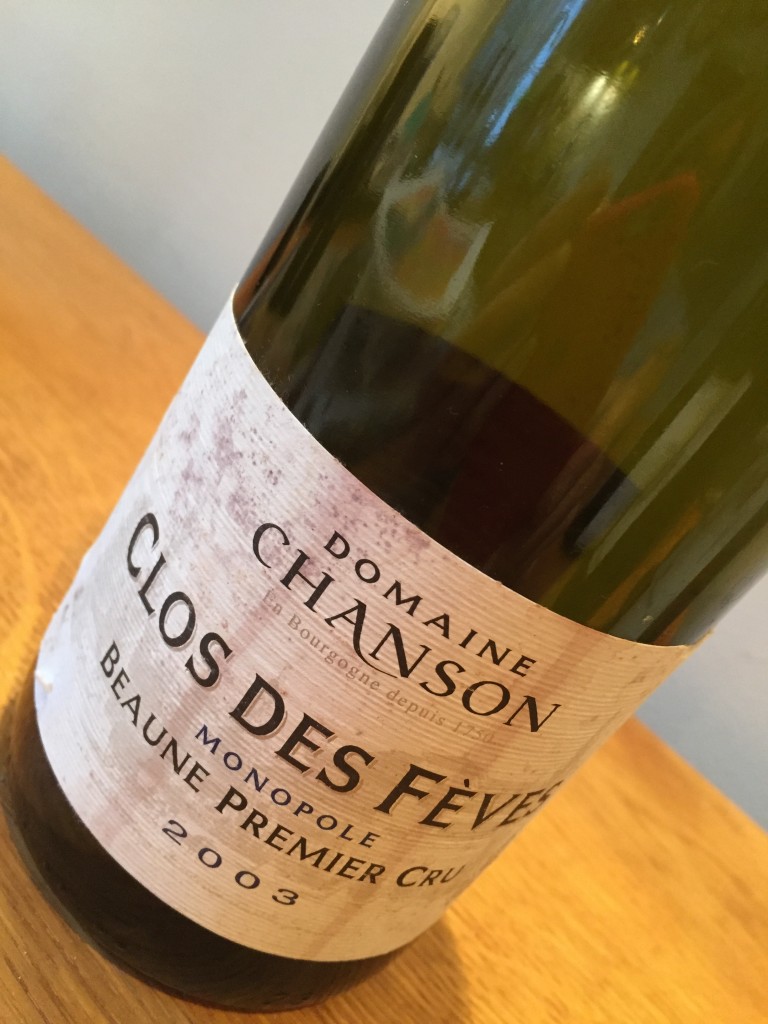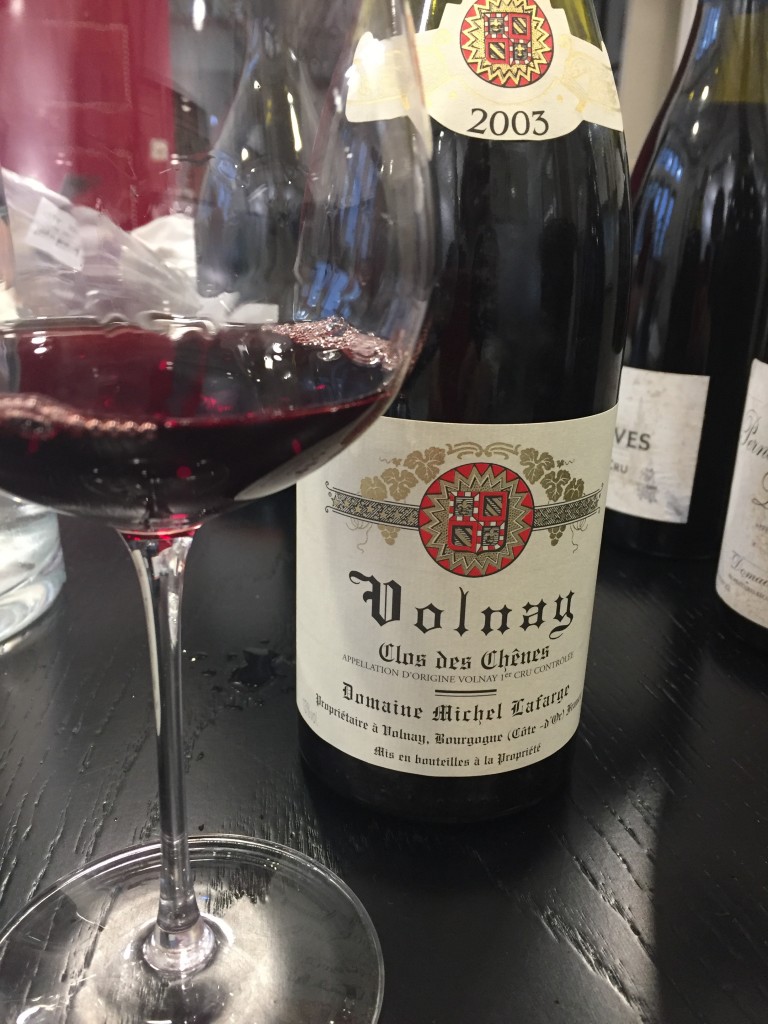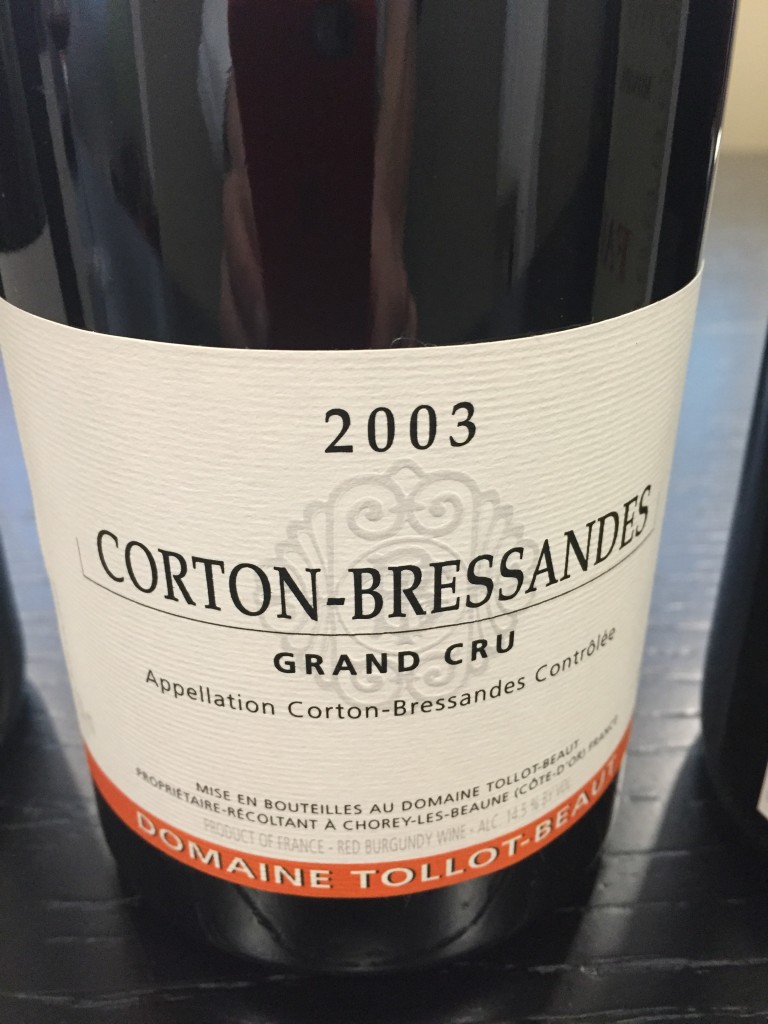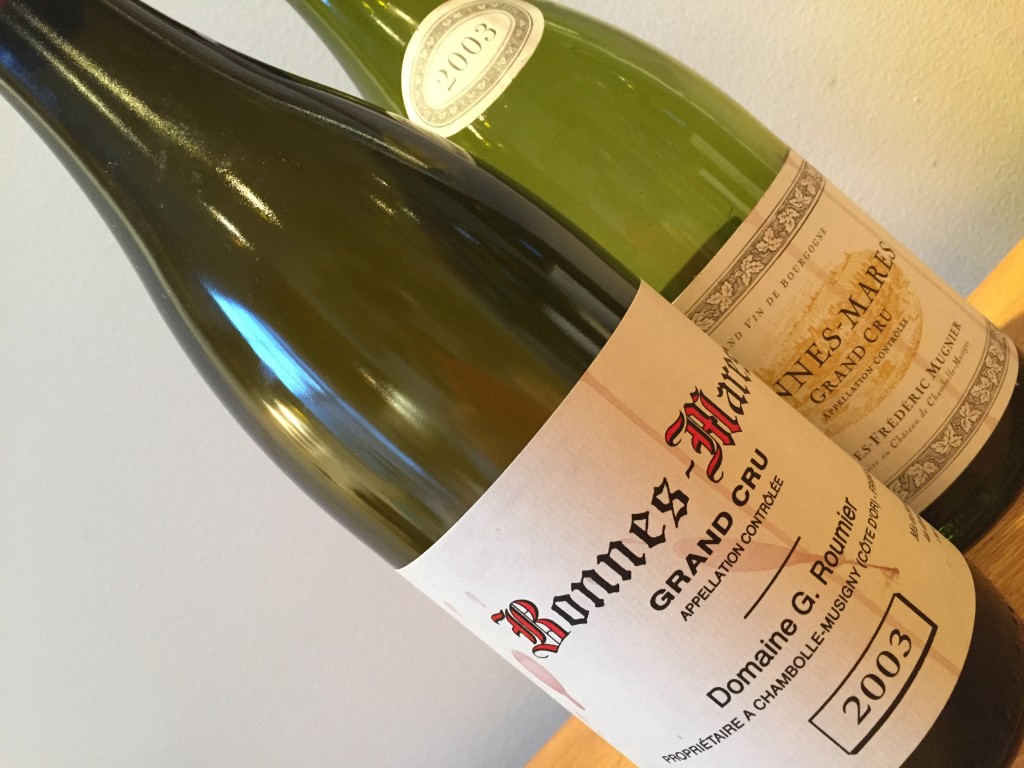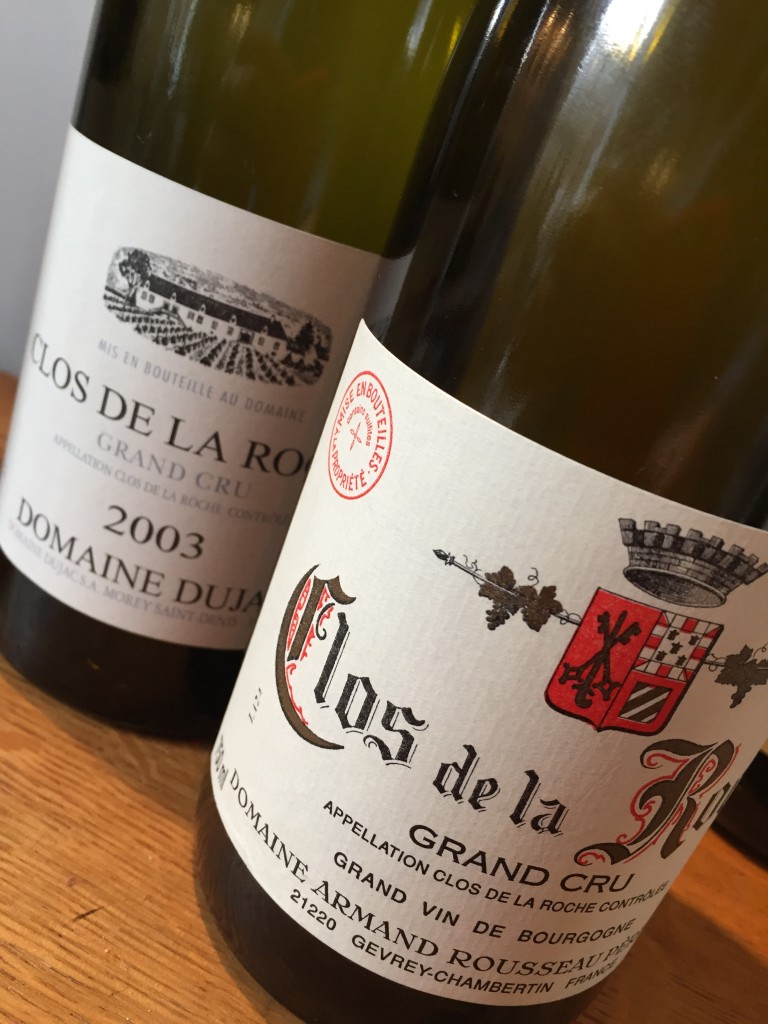Time to Mature
2003 & 2004 red Burgundy
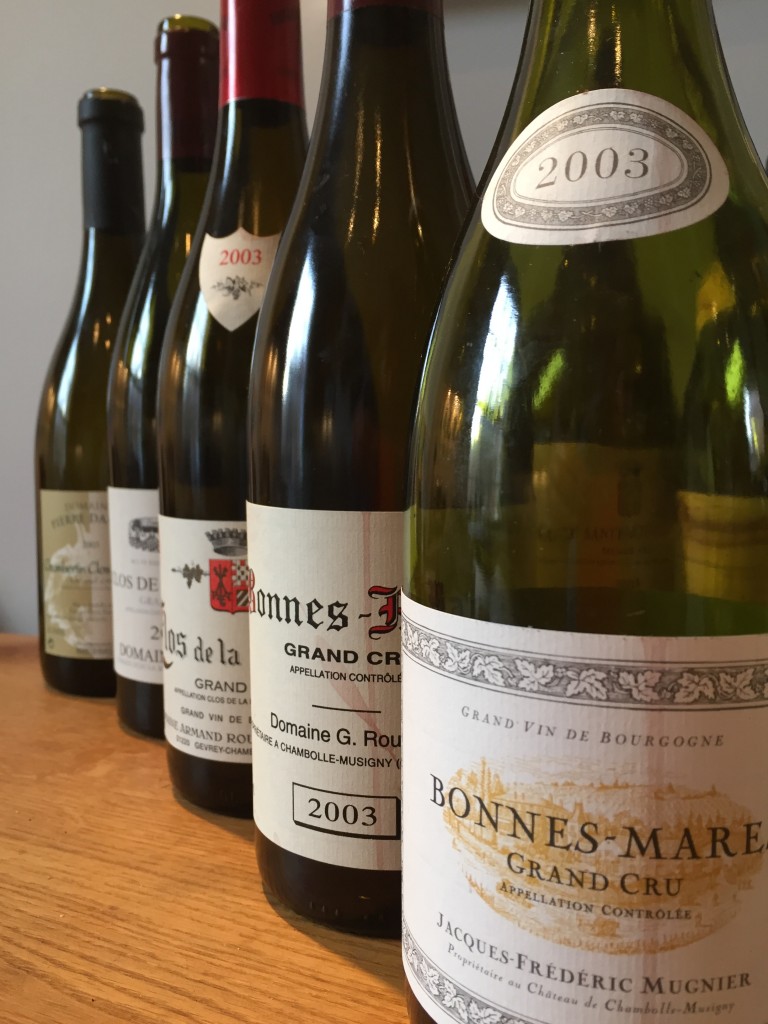
Two opposing vintages 2004 cold, wet and late and 2003 hot, dry and early.
2003’s extreme conditions of drought and heatwave promoted a mid August start to the harvest. The cold 2004 is also an extreme vintage in its atypical green profile.
With hot and early vintages becoming increasing familiar this millennium, 2003 offers the opportunity of assessing how wine from such conditions fares with time to mature.
Given there are currently two warm and early vintages in barrel, 2018 and 2019, it is particularly fascinating to taste 2003 now, while considering the future of our latest vintages.
Have the 2003s become more Burgundian as they mature… maybe revealing the terroir and showing less of the vintage character? Have they simply become intriguing old wine? Is 2003 interesting, or past it?
These were the questions running through my mind as we opened the bottles. Once again we were extremely fortunate to have a grand line up of bottles kindly donated directly from the producers’ cellars. This is no small thing as often they have a very few bottles left.
First up, some bullet point impressions which are applicable to both vintages. This is followed by a more detailed analysis of each vintage.
- Undoubtedly the wines have improved with age. If you kept these vintages in your cellar to mature, you made the right call. They are both more attractive and more complex than they were in youth.
- The terroir character in both vintages had become more distinctive, particularly in the best terroir. With both vintages the vintage character is still very marked, but the terroir has emerged.
- With the exception of some of the Grand Cru 2003s you should drink up now or over the next couple of years. Drink up your 2004s.
- I took home eleven of my favourite wines from the tasting. I pumped them out, left them in a cool room and tried them again 36 hours later. Interestingly they were very stable. They really did not change.
- While some of the top wine has the capacity to continue to age, only two or three wines might benefit. Some 2003s may continue to refine, but I would not risk ageing the majority further as there is no potential upside.
- There is a little drying on the finish of some wine – many of the 2004s, something that would be smoothed away with food.
- Surprisingly few wines, where the bottle was correct, were really ‘past it’.
- Don’t decant mature red Burgundy. It’s unnecessary. There was very little deposit in these bottles. Simply keep them upright for 24 hours or so.
- The 2004s don’t need extra oxygen to open up and will simply fade more quickly.
- However the best performing 2003 1er and grand cru, should be poured into a large Burgundy glass and given time to breath.
A note on condition:
- Several were corked (TCA). 3/38 which is too high. Even 16 years ago Burgundy was too expensive for this to be remotely acceptable. It is disappointing for those who have patiently cellared the wine. The fault lies in the cork producers (as all the corks were clearly high end and expensive). Take note when ordering from a wine list (or from a broker).
- Quite a number of the corks crumbled when they were removed and clearly in some cases had not protected the wine adequately eg Domaine Roumier Bonnes Mares 2004 and Jean Tardy, Clos de Vougoet, ‘Grand Maupertuis’. There were a few more that were not in perfect condition, a touch musty.
2004
2004 was a wet cold summer with rain and two big storms in July and in August which brought hail to Volnay in particular. Strict de-budding was necessary to contain the energy of the vines, which had bounced back with plentiful buds after 2003’s small harvest. For those who missed the moment, green harvesting was essential.
September brought welcome wind and some sun and this helped ripen the berries and control rot. There was odium and unhealthy fruit is always an issue for ageing. The lees for ageing are never as good as from a clean and healthy harvest and this is important for red, not only for white.
Rigorous sorting of hail damaged (Volnay) and unripe or rotten fruit was essential. Harvest started around the 20th September. Ladybirds were a problem. This was before vibrating tables were widely used and the unpleasant green flavours and aromas maybe attributed to these in part. It’s a vintage that tasted very green and lean in October the following year. There was a marked and unpleasant green character with notes of cassis, tomato, eucalyptus, flavours and aromas outside typical pinot fruit spectrum. This possibly and partly the effect of the ladybirds.
As the wines aged the green character has diminished. I found it objectionable in only two or three of the thirteen wines in our tasting. In general is has mellowed to a pleasantly herbal character. In some 2004s the herbal character is linked to fresh/green coffee bean and smoky aromatics on the palate.
An explanation of the the smoky character may be a reductive note from over liberal use of SO2. Whatever the cause, it is quite attractive and rarely very strong.
The 2004s were always fresh and energetic and 15 years later many still exhibit plenty of energy. You can see a link with some 2013s and 2008s. The tannins feel light and smooth and the texture can be silkier than expected. Most will have tannins which are somewhat leafy and while they are not the finest, they have softened and the texture is very pleasant.
Of course the wine are quite ‘light’ and with one or two exceptions, even quite thin and not very long on the finish. They always lacked some substance, but with maturity this has given them quite an elegant profile… a slim textured elegance, but the thinning is a concern for further ageing.
So on the whole the best are quite pleasant, surprisingly so. The worse are short in the mouth and a bit bitter. We did not have any shockers in this tasting, but they are out there.
As the ‘green’ character has faded, the terroir character has come to the fore.
There is absolutely no point in keeping the 2004. A couple in this tasting are past their best and several hover on the cusp. Some were drying on the finish. Most are in the zone of good to drink now.
There was no mistake made in keeping them. I feel they have improved with age and are more appealing now than five years ago, at this level of domaine and appellation, but it is time to drink up.
Even those with the slightly dryness will be just fine with food. Some more mature vintages are almost better on their own for contemplation, but the 2004 is not one of them. This is a mature vintage with plentiful acidity and energy which will be improved by the accompaniment of food. The herbal character makes them rather good with vegetable dishes. 2004 can work with tricky ingredients such as asparagus and tomato.
Don’t decant them. Just to emphasise the note in my bullet points which is particularly important for the 2004s. They are much more fragile than the 2003s and too much oxygen will hasten their demise. They thin quickly and dry out.
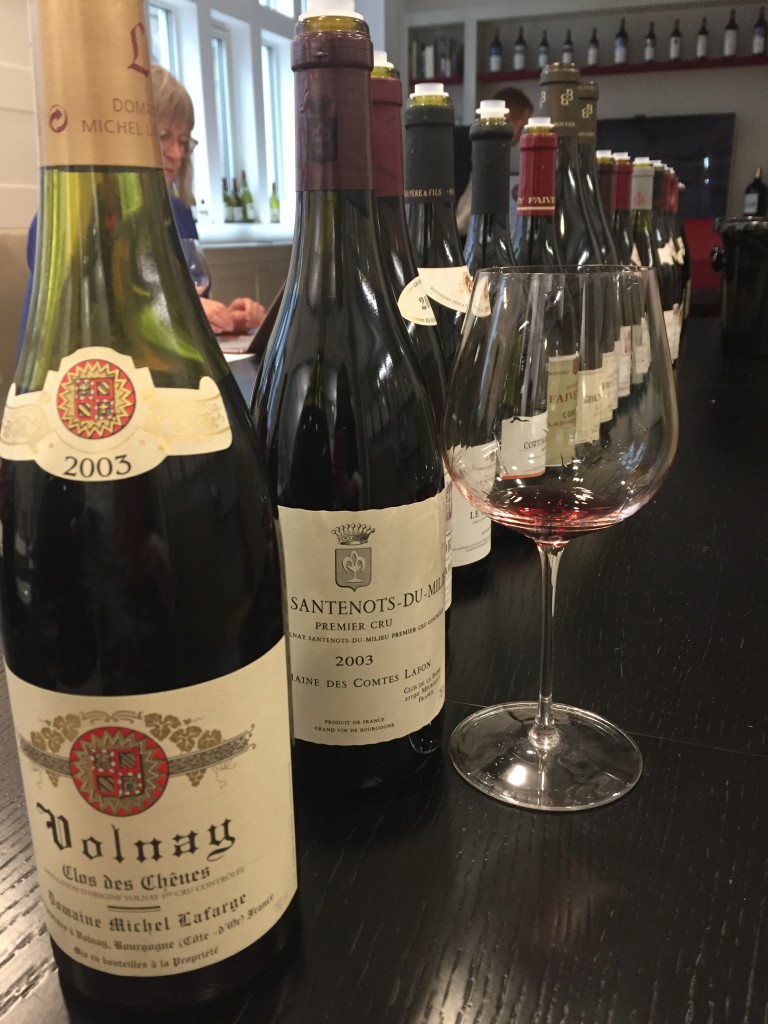
2003
This was the year of drought. Temperatures hit 46 degrees in the chemists on the Côte d’Or. It didn’t cool down at night. A proper canicule. This was uncomfortable and occasionally deadly for people and not good for the vines either. In such conditions the vines block and stop functioning and with this the ripening of the skins for the reds was delayed, while sugars had soared and acidity plummeted. This made a decision on when to harvest difficult.
It was a small crop, initially and principally because of a harsh April frost which affected the whole of the Côte d’Or. Much of the vintage was made with second generation fruit. There was hail in June and July causing further damage. While 2018 benefited from plenty of rain in June, 2003 had some reserves from a wet winter which helped vineyards with decent level of clay.
The heatwave resulted in hydric stress on thinner soils and for younger vines as is the case in 2018.
Some of the richest wine is from the Côte de Beaune; freshness depended on when people harvested. At Domaine Lafarge they picked early from 23rd August and Frédéric is very happy with his 2003s today, as the acidity was near normal. The typical 100 days from flowering to harvest was shortened to about 80.
There is not such a division in style as one might expect given some some picked from the middle of August and others waited a week or two and benefited from a touch of rain. Into September there were cooler nights. At Domaine Jean Chauvenet they waited until the 7th September.
Typically the reds were very ripe, exotically spicy, rich and had low acidity. The acidity may have been better for those working with biodynamics. Sites which give more tannin and substance were arguably at an advantage, but it was important not to extract too much or the tannins could be very robust. Generally the profile is of ripe tannins, full and soft, which are rather rustic. The fruit can taste cooked and sometimes burnt.
In Burgundy, after 12 months in barrel, many said you should drink this vintage within 3 years. The low acidity and high pH did not bode well for ageing. However the bottles in this tasting showed the vintage to have far longer ageing potential.
If you have kept your 2003s, I think you will be pleasantly surprised and rewarded. Sixteen years on and they are much more attractive and complex than they were in first flush of youth, when they were heavy, uncouth and rather baked wine.
They have slimmed down and become more precise. The terroir has emerged from behind the overt vintage character and is now clearly on display. Yes there is a notable sweetness about them, but this has mellowed into appealing aromas, warm stable, hay, manure hoofy (think picking out horses hooves), appealingly mould from the forest floor… the typical tertiary characters are present, intense and notably sweet. And there are still plenty of exotic aromatics on the palate in particular.
The burnt character has evolved into a more attractive brûlée, which works with the richness of the vintage. It adds contrast and some complexity… that burnt note sometimes becomes quite smoky.
There were always plenty of tannins in this vintage, which were quite coarse, but they have softened to a more gentle smooth rusticity. You can’t make a silky purse.. as the expression goes and these were never going to morph onto fine silk, but they can certainly be chunkily smooth. I really don’t miss the acidity. The substance – the matter and especially the tannins seem to make up for it in spades.
Despite the hot summer, the wines are not lethargic, they have lightened and lost weight and have improved with age.
When tasting the 2003s in a vertical, of course the will look clumsy and rather short in contrast with more elegant older vintages especially the 2002s. This is how I usually taste them, so it was good to see them as a vintage group and as such I found them much more enjoyable.
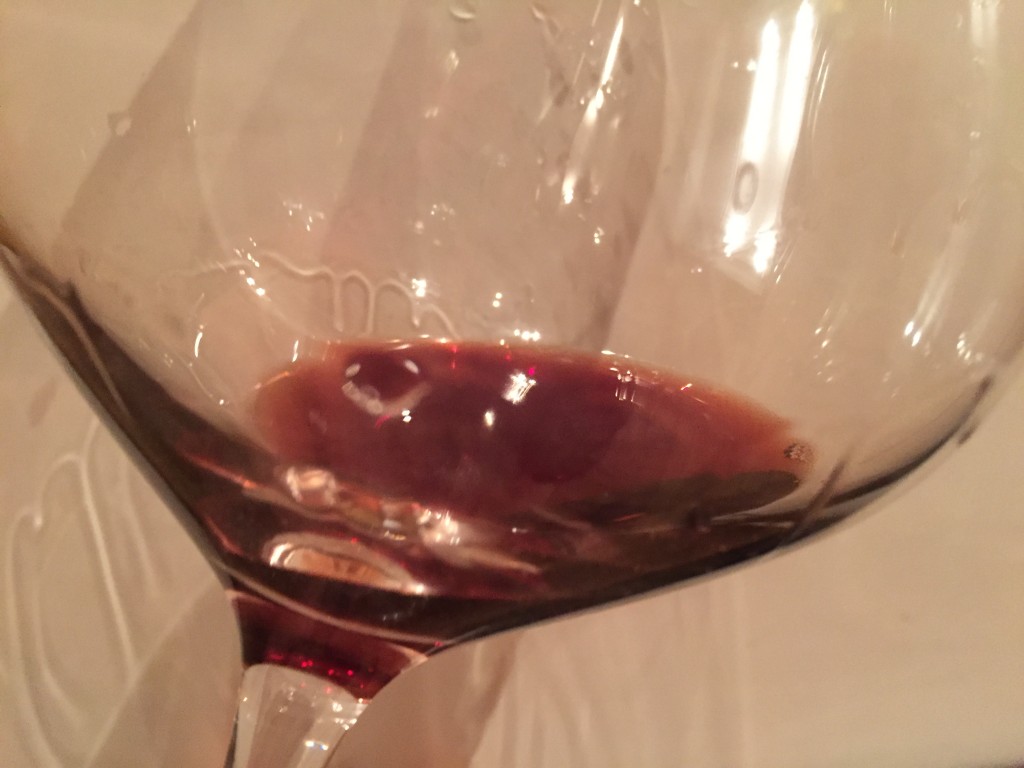
I am heartened in tasting the 2003s, particularly with the grand cru. In a lesser or atypical vintage splashing out on grand cru, becomes a questionable exercise for those whose interest lies beyond the label. In the early years a hot vintage may appear to compress the appellation hierarchy, but quality well out.. the grand cru in this tasting of 2003s have emerged in maturity to fulfil expectations.
Tasting the 2003s can give us confident in the recent hot vintages now in barrel, particularly the higher level 1er and grand cru. I have expanded on the trend for hot vintages in a ‘Briefing’ on my website with a interesting chart complied by Frédéric Mugnier.
I would drink the 2003s now, although there is no hurry. Drink over the next year or two for the best 1er cru. Some of the grand cru will certainly continue for five or more years, and a couple in this tasting might actually benefit from further ageing.
Out of interest I decided to monitor the progress of eleven of my top scoring wines over the following days. They were pumped out and left in a coolish room, but not too cold. I have tried this before and if the temperature is too cold the wine dies. They needed nurturing into full expression.
Thirty-six hours later, given they were opened at 8am one day and re-tasted at 8pm the following evening, all the bottles were either unchanged or slightly more interesting and no less fresh for keeping them. The richness really held the wines together. As one taster remarked of the 2003s “these wines are a meal in themselves.” I kept a few even longer. The Santenots dropped out by the following evening (60 hours), but Frederic Mugnier’s Bonnes-Mares was just delicious and Rousseau’s Clos de La Roche clung on for an impressive four days.
I would not advise decanting any of the wine, but the 2003s certainly need some time to breath in a nice big Burgundy glass.
Tasting Notes
25/11/2019
* I like them
** I like them a lot
*** My favourites
2004 Vintage
*Domaine René Bouvier, Marsannay Clos du Roy (magnum)
Bitter coffee and peppery aroma. Good intensity for a village wine. Fresh and bright with a hint of tomato, but attractively so. Almost silky tannins, elegant with an appealing fluidity. Appetising grassy freshness at the end. It is lovely now showing no dryness. Drink now. It may well plateau for another year, after all it is a magnum, but there is no value in keeping it. 15.75 or 85
2020. Drink.
*Domaine Marc Roy, Gevrey-Chambertin Clos Prieur
Sweet fruit and warm leather on the bouquet. Juicy and slightly smokey palate with a chamois leather texture. Very fresh with a tight, light and attractively metallic bite on the finish which is rather long for a village wine. Good, but I would not keep it. 16.15 or 86
2020. Drink.
Domaine René Bouvier, Gevrey-Chambertin Racine du Temps (magnum)
Earthy bouquet with slightly green, woodland undergrowth. Rather svelte and rounded in the mid palate. Hoofy richness combines with a nice minty freshness. Dark green notes on the finish. A light finish. Maybe fading a little now. 15.65 or 84
2020. Drink up.
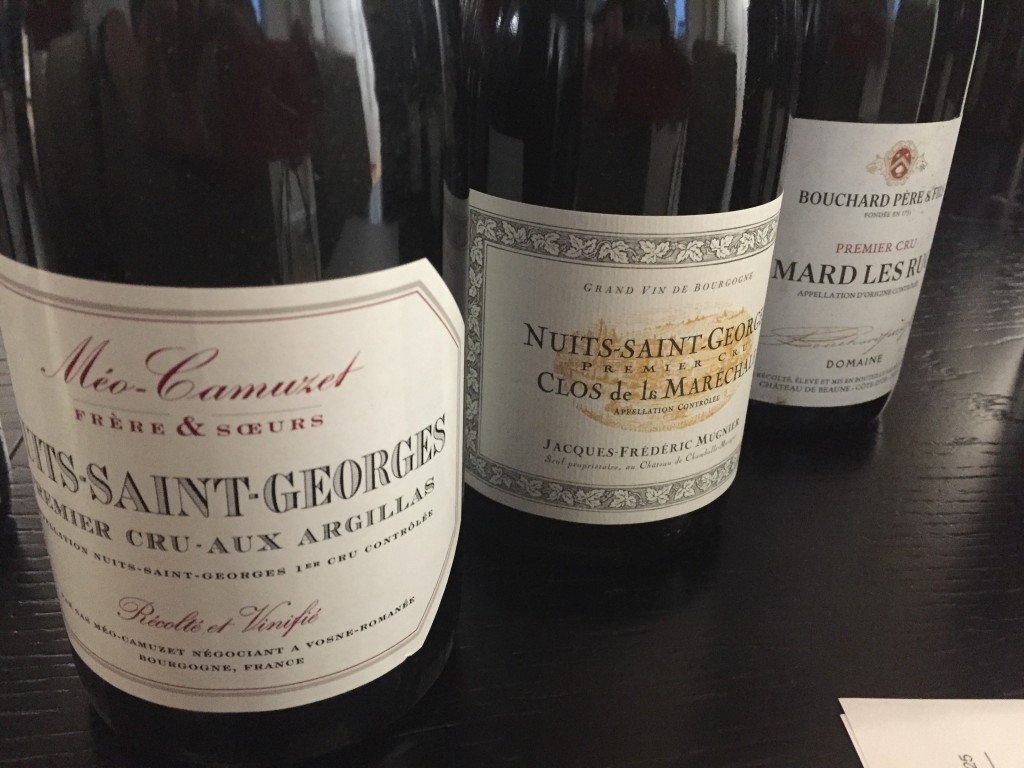
Domaine Bouchard et Fils, Pommard 1er Cru, Les Rugiens
Fresh and upright. Marked tension and minerality. It is bright and has a sappy, chalky texture and minerality. Straight. Lacks some mid palate. It is rather lean, but never-the-less attractive. The finish is light, slightly dry and salty. 16.75 or 89
2020. Drink up.
Domaine Jacques-Fréderic Mugnier, Nuits-Saint-Georges 1er Cru Clos de La Maréchale
This was the first vintage for Frédéric who recuperated this vineyard from a long term lease to Faiveley. The aroma is strongly reminiscent of tomato and green pepper. I like the smooth texture and it shows a certain generosity for a light vintage. Supple tannins in the middle palate, become slightly dusty on the finish. It has a marked green 2004 flavour profile, which I don’t really like, but the texture and the freshness are appealing. The flavour profile would be much improved with food. I do not think it will last longer and possibly may be past its best point. I preferred it when I tasted it two years ago. 15.75 or 85
2020. Drink up.
Méo-Camuzet, Frére et Soeurs, Nuits-Saint-Georges 1er Cru Aux Argillats
Not much on the nose, but really quite vibrant on the attack. It has plentiful tannins which are not sophisticated but bestow a punchy freshness. Quite herbaceous in flavour and touch dry on the finish. It would be nice with food now, but no potential to age further. 16 or 86
2020. Drink.
Domaine Michel Gros, Nuits-Saint-Georges 1er Cru
the first bottle was a little odd, but the second was a delight. A blend of Vignesrondes and Aux Murgers. A lively berry-fresh aroma with hints of forest floor. Vivid, light and slim textured palate with silky tannins and a slight herbal and smoky note. It wafts gently to a refined finish. 91
2020-25
Domaine de L’Arlot, Nuits-Saint-Georges Clos des Forêts Saint-Georges
Very evolved aroma. Autumn leaves and undergrowth. A touch of truffle. Slightly smoky. I greatly prefer the nose to the palate. This smoky character on the palate is almost asphalt.. and green at the same time. It is really rather lean, green and dry on the finish. I tried the 2004 early this year (see my notes on mature vintages) and that didn’t taste dry, so it may be bottle variation or it’s drying up. Given the really evolved colour and aroma, I would say it was not the best bottle. 15.25
2020. Drink up
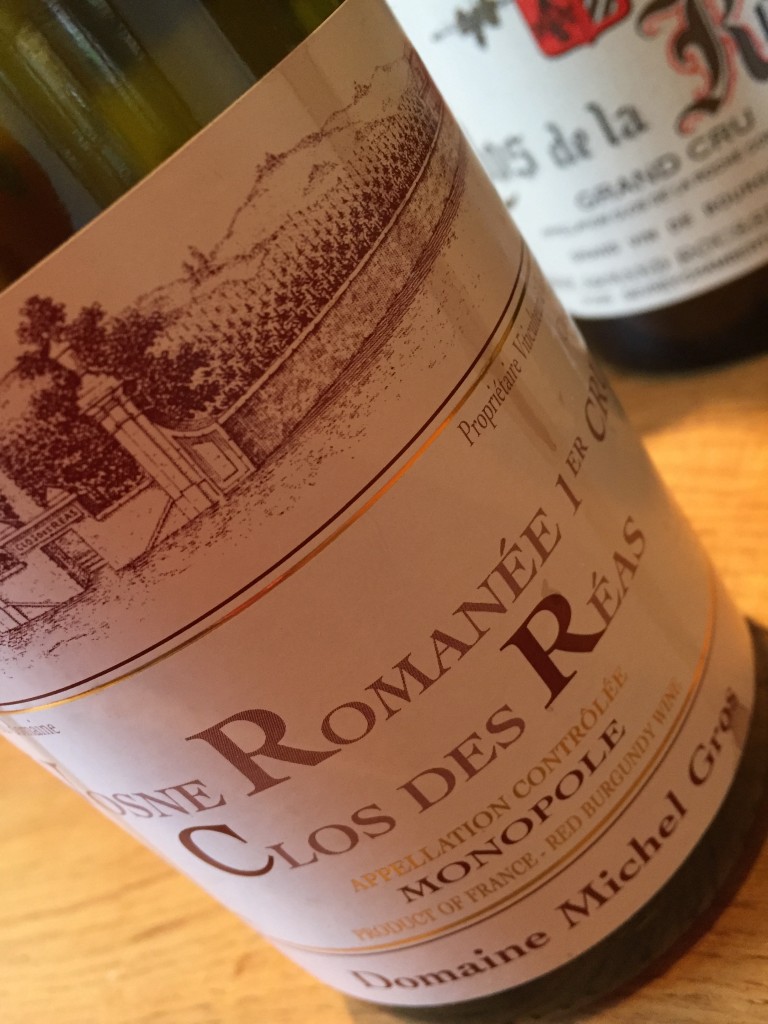
**Domaine Michel Gros, Vosne-Romanée 1er Cru Clos de Reas
This is hoofy (that sweet smell you get when picking out a horse’s hoof) and really quite intense. You can still sense some red fruit fruit. Surprising richness of texture and supple tannins. Succulence on the finish with a bitter coffee note at the end. Still so vibrant. A very attractive 2004. You might keep it longer. There is no benefit in doing so, but I do not think it will fade in the next year or three. 18 or 93
2020-2022
***Domaine Georges Mugneret-Gibourg, Echezeaux
Such brightness on on the nose for a mature wine. An attractive red pepper aroma. Zesty attack. This energy carries to give tension on the finish. It has a lean, but elegant and well defined palate with supple tannins. Flowing. Star anise and slightly bitter fennel at the end… lovely long if thin finish. It’s a delight, but I would not keep it longer, or you might miss the moment of intensity and delicacy. I don’t think it will fade immediately, but I wouldn’t want to risk it. One of my favourite 2004s… ever. 18.5 or 95
2020-22
I tasted this 36 hours later and it surprisingly it was still very good.
Domaine G Roumier, Bonnes Mares
Very evolved bouquet with autumnal notes bordering on musty. It is sweet on the attack, but rather lean on the palate and the tannins have a dusty character. I quite like the coffee which makes a light aromatic finish. The cork was not perfect. It crumbled and had cracks. Sadly this bottle was certainly past its best. 14 or 80
Domaine Rossignol-Trapet, Latricières-Chambertin
Very light colour. Delicate, pure and fine boned with elegant slim textured tannins. It has a raciness. I like the purity and minerality, but it is quite dry and lean and so I would not keep it longer. It has good terroir definition though. 17.75 or 91
2020. Drink up.
**Domaine Dujac, Clos de La Roche (magnum)
Sweet rot. A richly mature bouquet, slightly smoky and yet sweet. Spicy with coriander seed and white pepper. Surprisingly juicy albeit with a herbal edge. Despite the vintage it has something quite generous about it with more depth to the palate than might be expected. This is a magnum and is still fresh, but thins on the finish. It is delicious now, but I would not keep a bottle much longer. 18.15 or 93/4
2020. Drink.
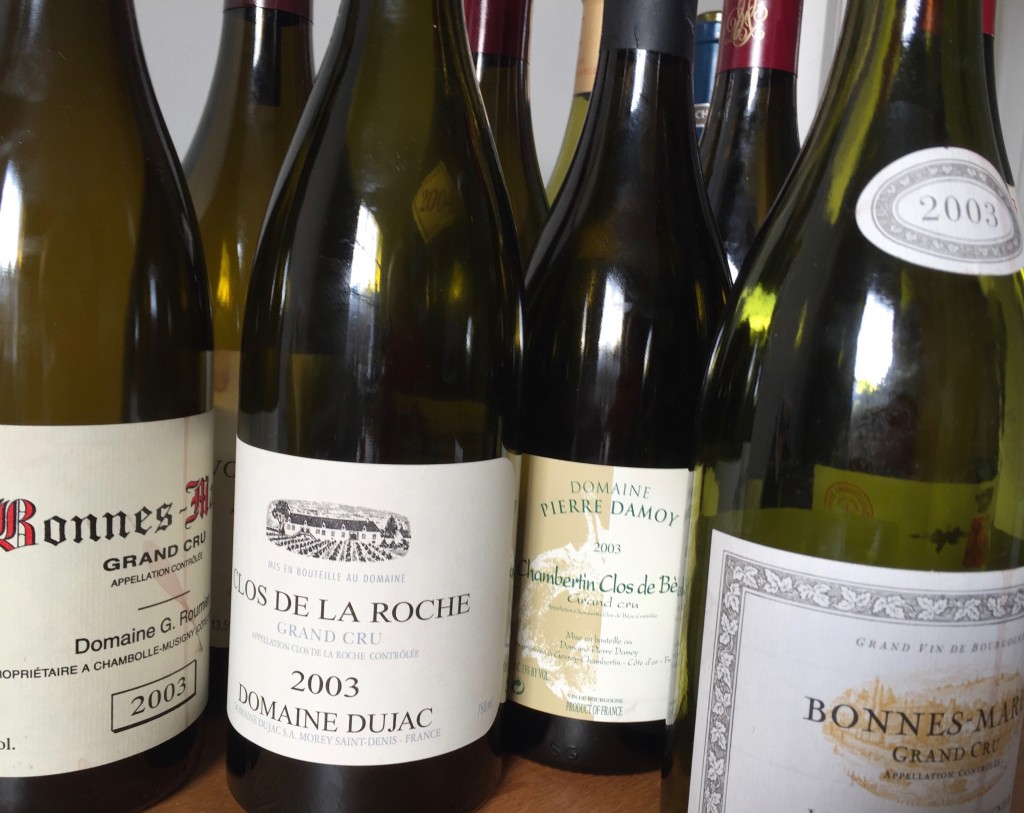
2003 Vintage
*Domaine Hubert Lamy, Saint-Aubin 1er Cru Derrière Chez Edouard
Spicy orange peel aroma. Softly textured. Rather juicy and succulent. There is light minerality under the palate. Fully mature, but still very attractive. What more could you ask? You can drink it over a year or two. 15.5 or 85
2020-22
Domaine Rapet Père et Fils, Pernard-Vergelesses, 1er Cru Les Vergelesses
Sweet and caramelised on the nose. On the palate too it has a somewhat burnt character. It is very assertive. There ripeness, a salty edge and a brûlée character. A bit bitter and abrupt on the finish. I would certainly try it with food. 14.75 or 82
2020 and drink up
**Domaine Chanson Père et Fils, Beaune 1er Cru Clos des Fèves
Sweet, sumptuous aroma with a hint of truffle. Richly rounded with some prune notes. Not exactly burnt, but attractively brûlée. Plump middle with a sweet citrus finish. It’s ripe, even exotic, but has contrasting minerality. A certain opulence. Its very 2003 and I rather like it 17.75 or 92
2020-23
Tasted 36 hours later, it was unchanged.
**Domaine Tollot-Beaut, Beaune 1er Cru Grèves
The first bottle was corked, but fortunately I had a second in reserve and these are the notes for this bottle which was clean a a whistle. It was super fruity. Plump red fruit, sweet raspberries. Surprisingly in the red fruit spectrum. Hard to believe it was 16 years old as it showed very little tertiary character. Soft and succulent with smooth, easy tannins, a little spice, touch of anise on the finish. The finish is not especially long, but the intensity mid palate is good. A remarkably youthful 2003. 17.85 or 92 Drink now, but no hurry.
**Domaine Michel Lafarge, Volnay 1er Cru Clos des Chênes
Sweet, warm stable and rose aroma. Wonderful enveloping floral character. While it does not have a great deal of mid palate, I like the tension for 2003 and the salinity. Really good terroir expression. Long and pure at the end. An elegant, aromatically very ripe, but quite ‘light’ wine. It is no surprise that Michel and Frederic picked early on the 23rd August. It cannot see how it can improve and so I wouldn’t age it longer. 17.95 or 93
2020. Drink.
Tasted again 36 hours later. Fading a little, but still very pleasant.
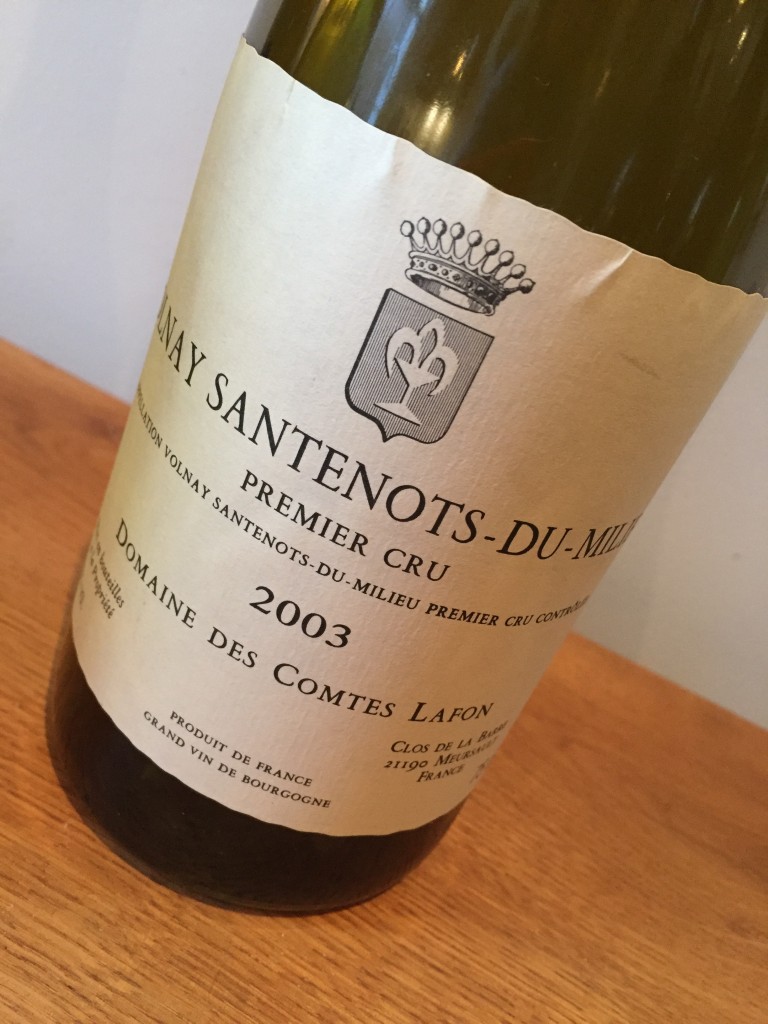
***Domaine des Comtes Lafon, Volnay 1er Cru Santenots du Milieu
Rose petal and a hint of butterscotch. Soft and velvet textured. Rounded and plumply juicy. You can dive into this wine and just enjoy its indulgence. It is surprisingly fresh too with a good line of minerality underpinning the freshness. The finish is long and quite assertive. There seems to be plenty of life in this wine. I can see this Santenots outliving the other 1er in this tasting and even some of the grand cru. 18.25 or 94
2020-2024
Tasted again 36 hours later and was holding beautifully but fell off after that.
Domaine Chandon de Briailles, Corton Maréchaudes
Sadly the first bottle was corked. If I can source another I will add it to the notes.
Domaine Bouchard, Le Corton
Sweet, rich bouquet with robust richness on the palate which lacks refinement. The tannins are rustic and sadly it dries very quickly on the finish. I would not keep it. A poor bottle or past its best. 14 or 80
**Domaine Tollot-Beaut, Corton-Bressandes
Light aroma of warm stable, straw and manure, but quite restrained. Sweet and sunny palate. Generous plummy richness. Maybe the tannins are a touch burly, but this wine is very much alive and kicking and has plenty of vigour and freshness on the finish. The tannins hold it together and provide the freshness and energy. You could keep it. I can’t see it developing further, except maybe a touch softening of the tannins? There is no sign of dropping off, so no hurry. 18.25 or 94
2020-24
Domaine Faiveley Père et Fils, Clos de Corton Faiveley, Monopole
Such a deep colour. It’s hardly faded at all. It is rich and full and succulent. Bullish tannins. A heady, opulent style. Dark and pretty tannic on the finish. It’s very burly. It would work well with a meaty dish, but those tannins are standout. The punchy finish, is pretty tannic but has some sweetness. It just lacks sophistication and is a bit over the top. 17.25 or 90
2020-22
Domaine René Bouvier, Gevrey-Chambertin Les Jeunes Rois (magnum)
My first impressions were that it was extremely evolved – given it is magnum – the colour is very brown. A coffee aroma. The palate has a certain juiciness with a hint of the burnt caramel. The tannins are nice and smooth and the finish is quite sweet…however as it opened up it was clear it was a touch musty. Shame, but never-the-less, a good bottle of this would be nice. 15, but sufficient to judge that it might be nearer 16 (86) for a clean bottle.
Moving onto Bernard Bouvier’s Racine du Temps, it was easy to appreciate that Jeunes Rois was really not at its best.
**Domaine René Bouvier, Gevrey-Chambertin Racine du Temps (magnum)
This has tension and intension. No lack of bite. For a wine from a hot vintage it has plenty of energy. Ripe, but with a certain edge. The tannins have a bit of grip. It’s not really very 2003 with this freshness. Excellent village wine. It’s lovely now, but this is a magnum so I would hesitate to keep a bottle longer. 16.35 or 87
2020 and drink up
Méo-Camuzet, Frére et Soeurs, Nuits-Saint-Georges 1er Cru Aux Argillats
A faint ferny and blood orange aroma, which opens to become quite spicy. Sweet attack with more of the spice and a slightly white pepper note with the richness. It’s interesting. It’s very aromatic… somewhat exotic. All in all I rather like it and greatly prefer it to 2004. 16.85 or 89
2020-22.
*Domaine Michel Gros, Nuits-Saint-Georges, 1er Cru
Sweet mulch and hoof bouquet; most attractive. Rich and succulent with hints of nutmeg and cinnamon. There is an aromatic intensity. Rich, smooth, rounded and exactly what you expect of an attractive 2003, even the prunes and a touch of chocolate. I like it, but would drink it now 17.5 or 91
2020. Drink up.
**Domaine de L’Arlot, Nuits-Saint-Georges, 1er Cru Clos des Forêts Saint-Georges
Rich, quite smoky and succulent, yet this has energy and sappy minerality. Very concentrated, sweet, but salty. The tannins have a touch of bitterness in a nice way and are quite fine. There is structure, but some finesse for 2003. The finish is saline with a hint of graphite. A jolly good 2003. 18 or 93
2020-23
*Domaine Jean Chauvenet, Nuits-Saint-Georges 1er Cru Les Bousselots
This was harvested on the 7th September. It is ripe, sweet and intense on the nose. Dark with the flavour of prunes. Certainly compact, powerful and really quite tannic. The liquorice, tarry tannins would benefit from food. An assertive and tannic wine without. Its pretty full on, but I like the vigour. I cannot see this falling off in the next few year and actually might continue to soften and improve 17.75 or 92
2020-25
Domaine Michel Gros, Vosne-Romanée 1er Cru Clos de Reas
Corked. I will have a replacement bottle in early January and will re-taste and post my notes.
***Domaine Georges Mugneret-Gibourg, Echezeaux
It has sweet citrus and ripe mandarine on the aroma, veering into mango. On the palate it is sweet and juicy. There is a slightly exotic plumpness the middle, but also high a tone. It has a purity and high line which seeks to defy the vintage. Fine tannins which are very elegant for 2003. Long and streamlined. Love it. What precision in a warm vintage. For pure flair and style this is one of my favourite wines of the tasting. Lovely now, but I would question keeping it for too long – so delicate for this rich vintage. (Les Quartieres de Nuits and Rouge du Bas as 50/50 the latter brings the freshness as well as intensity. No doubt it helped that the vines are very old in the latter sector) 18.75 or 95
2020-24
Tasted again 36 hours later and excellent – maybe better.
***Domaine Jacques-Fréderic Mugnier, Bonnes Mares
Light hoofy characters. Spicy aroma – five spices – star anise and cumin.. ripe, but high toned. Rich but elegant and very well defined. A refined 2003. The texture is not entirely silky. There is more texture giving it a light taffeta crunch. It has an aromatic richness in the exotic spices. I do like the refinement and the length. A highlight of this tasting. No problem to continue to age this should you wish, but I would drink it now. 18.95 96
2020-25+
Tasted again 36 hours later & holding well two and a half days later
**Domaine G. Roumier, Bonnes Mares
A little darker than the previous Bonnes Mares. Full, rich dark bouquet with autumnal forest floor and prunes. The palate it is dark and spicy. A punchy Bonnes Mares with gumption. Dark, rich, chocolate note and a creamy texture. An earthy sweetness…. sweet manure and bitter chocolate on the finish. There is richness and a certain bullishness but behind this a more chalky saline note. 18.85 or 95/6
2020-25
Tasted again 36 hours later and it was unchanged but did not hold when tasted two and a half days later.
***Domaine Armand Rousseau, Clos de La Roche
Rich and supple with the aroma of warm leather, coffee and mulch. Full bodied rounded, succulent and juicy. Smooth and sweet tannins, chunky and rich… full phenolic ripeness. There is still quite a lot of fat in the wine with good density. Under the palate comes a cooler grip, the limestone bedrock in this terroir comes through. Ageing just splendidly. I love it. No hurry – possibly another 10 years. 19.15 or 96
2020-30
Tasted again 36 hours later…and 4 days later it was still going.
**Domaine Dujac, Clos de La Roche
Rich and opulent aroma. A full bodied wine with spicy characters. Cinnamon and a touch of cumin. It’s more aromatically exotic than Rousseau, but less juicy unctuous fruity. There is a richness of texture..quite thickly textured and lots of energy. Excellent depth too and a persistent aromatic finish. I like them both, but I would not wait quite so long with this clos de La Roche. 19 or 95
2020-23
Tasted again 36 hours later and barely changed. Plenty of punch.
Domaine Jean Tardy, Clos de Vougoet, ‘Grand Maupertuis’
One of the last two bottles. The bouquet is quite dusty. There is breadth to the palate, but lacks intensity, is slightly baked and rather thin and dry on the finish. This is a great terroir and sad that this bottle did not do it justice. 14
Domaine Pierre Damoy, Chapelle-Chambertin
Rich baked fruit aroma to a sweet, rich, generous and dark palate with a caramel note and a hint of burnt coffee. Smooth texture, but would like more depth and dimension for grand cru. It just rather blocky and lacks dynamism. 17.75
Drink now.
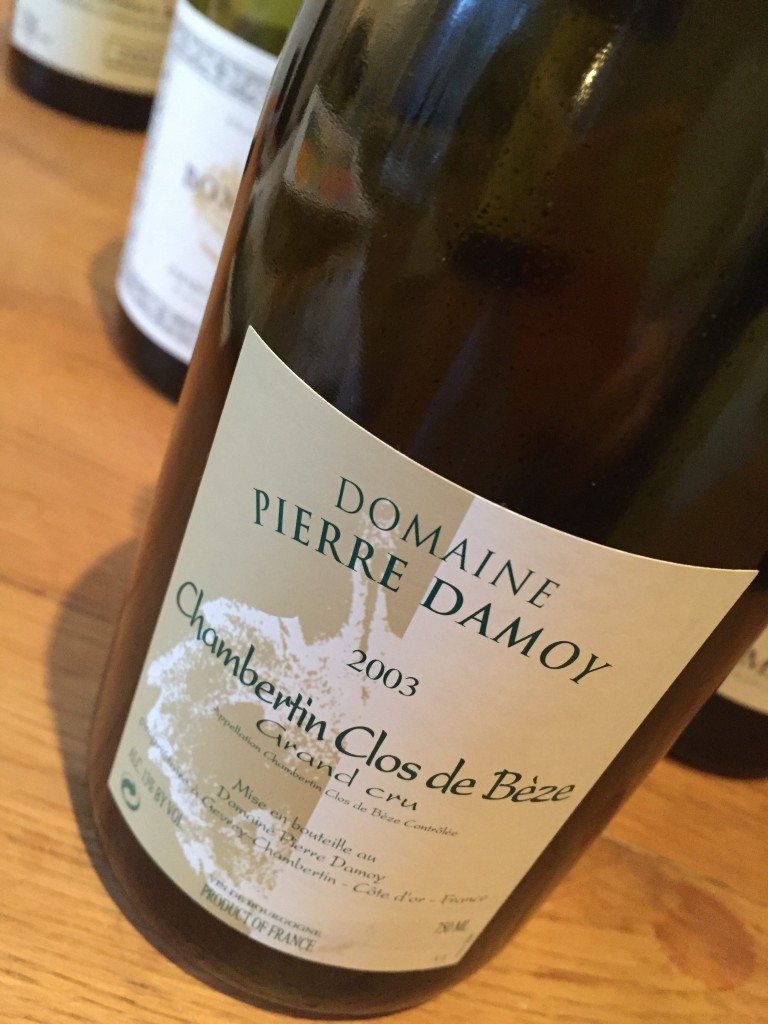
**Domaine Pierre Damoy, Clos de Bèze
Now this is altogether more deep and energetic than the Chapelle-Chambertin. Hedonistic, voluptuous wine Rich, sweet manure and hoofy aroma. Full on unctuousness. Exotically spicy and super ripe. Prunes, laced with an almost a rose petal cordial sweetness. The texture is smoothly chunky. The tannins are super ripe and chocolatey. When I tasted this on first opening it was a wine of desperate parts, and a bit flashy and quite heavy. However you need to wait, or decant – this the only wine in this tasting I would decant. 36 hours later it started to come together and I really enjoyed the rose petal aromatics which come through on the powerful rich finish. This is probably the only wine in the line up that still needs time to refine and become more precise. But goodness me, there is plenty of pleasure to be had. 18.65 or 95
2025-35
Tasted again 36 hours later and it improved with the extra time.
Other Reviews and Impressions
Jancis Robinson MW. Jancis’s review of the 2003 vintage see the Financial Times 21st December 2019 and her website the same week.
Club Oenologique Magazine will be reviewing the tasting in the March issue. (That’s me again)
Decanter will publish a review. If I hear when I will post the issue date.
Steven Brook
“This was a fascinating tasting. I really disliked the 2003s when first tasted. There were some cooked aromas, flabby textures, and a lack of acidity. Moreover, some of the top sites, grands crus, seemed worst affected by the canicule. Being the best located and exposed, they were even less protected from the heat than less favoured expositions.
So I was curious to taste a range from top producers over 15 years after the vintage.There were few cooked or baked aromas, but then I expect top estates would have ensured that sunburnt berries did not enter the vats. To my surprise there were very good wines from grands crus, perhaps because of the preponderance of old vines there too. My top wines include Faiveley’s Corton, Bouvier;s Racine du Temps, both Bonnes Mares, Rousseau’s Clos de la Roche, Tardy’s Clos Vougeot, and the 2 Damoy wines. Nonetheless low acidity remains a problem, and almost all the wines lack the persistence and length of a great vintage.
I was disappointed by most of the 2004s, as many of them were simple and lacked nuance. The best had freshness and charm, but there was still a lack of weight and complexity. As I recall, I had enjoyed them more when they were just released. Perhaps they should ever have been kept for too long, whereas some of 2003 have gone the distance. My top wines were Clos de Reas, Echezeaux, Roumier’s Bonnes Mares, and the well balanced Dujac Clos la Roche.”
Terry Kandylis (Head Sommelier 67 Pall Mall)
Terry particularly liked the 2004s which he considers a good match with food and are not expensive on a wine list. He mentioned the stylishness of Domaine Mugneret-Gibourg Echezeaux 2003 and 2004. He also liked both Bonnes-Mares and Dujac’s Clos de la Roche.
Like me he was impressed with Domaine Hubert Lamy, Saint-Aubin 1er Cru Derrière Chez Edouard
Neal Martin didn’t seem to like either vintage. He was concerned about issues of brett in some of the 2003s at the higher end.
Charles Taylor MW
“I was disappointed in the 2004s overall. Most were herbaceous and stalky and lacked ripeness. The wines I enjoyed were from René Bouvier, Mugneret-Dubourg, Rossignol-Trapet and Dujac which were simple but had some sweetness and flesh.”
“The 2003s were much better with no lack of ripeness. The best were sweet and generous with ripe tannins, the less successful ones were fleshy but rustic with coarser, dry tannins and the fruit was drying out faster than the tannins were softening.
My top wines were the Clos de la Roche from Dujac and Bonnes Mares from Roumier, closely followed by the Clos de la Roche from Rousseau and Bonnes Mares from Mugnier. Other favourites were Bousselots (Chauvenet), Argillas (Meo-Camuzet), Gevrey-Chambertin Racine du Temps (Bouvier) and Bressandes (Tollot-Beaut).”
Jim Eustace (Hayes Hanson and Clarke)
“2004: There were certainly some wines that displayed the classic 2004 aroma of ladybirds (if that is really what it is) and/or unripe stems/leafiness. These wines give very little pleasure and I don’t see them getting any better. At the other end of the scale, the Echezeaux 2004 from Mugneret-Gibourg was glorious. Beautifully perfumed, perfectly balanced, scented, silky and fresh – a great success of the vintage. Equally, the Roumier and Dujac Grands Crus were stunningly beautiful. In between I also enjoyed, rated, and would happily drink the 2004s from Bouchard, Meo-Camuzet, Michel Gros and Domaine de L’Arlot.”
“2003: Hubert Lamy’s Saint-Aubin gave me hope for the 2003s, being surprisingly fresh and intense. Then I struggled to find anything I really enjoyed, with the exceptions of the Lafarge Clos de Chenes and the Arlot Clos des Forets Saint-Georges, until the Grand Crus. The run from Fred’s Bonnes-Mares to the Dujac Clos de la Roche was magnificent. But you would hope and expect these top growers to get it right.”


